

This guide has not yet been updated for the current season. Please keep this in mind while reading. You can see the most recently updated guides on the browse guides page
Vote received! Would you like to let the author know their guide helped you and leave them a message?
 Boots of the Magi
Boots of the Magi
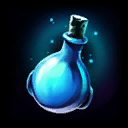 Mana Potion
Mana Potion
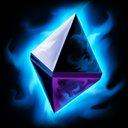 Obsidian Shard
Obsidian Shard
 Warlock's Staff
Warlock's Staff
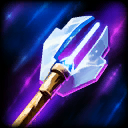 Rod of Tahuti
Rod of Tahuti
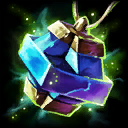 Pythagorem's Piece
Pythagorem's Piece
 Void Stone
Void Stone
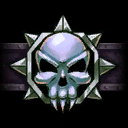 Girdle of Might
Girdle of Might
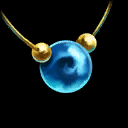 Purification Beads (Old)
Purification Beads (Old)
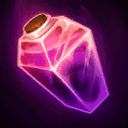 Potion of Magical Might
Potion of Magical Might
What makes any good game challenging is that it takes some sort of skill to play it. With the advent of online gaming, the PvP spectrum makes a formula of constant change, where the game is always evolving. As such, understanding your opponents' basic skills and strategies is important to being successful in any strategy game (especially in real time). If you are going to utilize this guide, simply looking at my skill and item order will NOT be useful, unless you have that basic understanding. Understanding the purpose of each of my choices will allow you to evaluate whether they are the right choice for your playing style, and whether or not you can improve upon the strategy outlined here (I hope you will take into account your opponents and make these changes as necessary).
If anyone feels the desire to use part of my guide in theirs, feel free, but I would appreciate a small citation ("thanks in part: sven00100" is plenty) if large portions are copy-pasted. Thank you!
Hades is a wonderfully diverse god, with many ways he can be played. I have very aggressive tendencies, and Hades allows me to exploit these tendencies to my advantage.
While Hades is listed as a tank, he has the ability to be a very successful hybrid DPS god with incredible amounts of utility. Through this guide, I will outline a Hades build that is centered around harassing, killing, ganking, and countering to gain lane advantage. The guide produces an offensive early-game Hades, with a moderate-survivability, high-damage late-game Hades. Hopefully this guide will not only lay out the thought processes behind choosing your build, but also making decisions during laning and team-fight phases.
The Item list I have provided is my standard item list, if I have no special circumstances. What I mean is that sometimes you will get very aggressive opponents, your opposing team may not spec into defense at all, they may go all defense, they may run away at every engage, etc. These would all be reasons to change your item build. For the most part my first 4 items are not affected. I will give a brief explanation of why each item was chosen, and what circumstances might indicate replacement of that item. (after the boots, I just listed the item once, and it is presumed that you are buying to tier 3)
 Boots of the Magi - This is a pretty standard first choice. Especially in early fights, when everyone has relatively the same strength, these are important for disengaging. They are also important in returning to the lane, and chasing down junglers (who, after a recent patch, rarely have boots to start). I have occasionally sold the boots late game, but in order to do so you must be sure you can stay in the lane, because it costs you valuable time and utility to slow your return to the lane.
Boots of the Magi - This is a pretty standard first choice. Especially in early fights, when everyone has relatively the same strength, these are important for disengaging. They are also important in returning to the lane, and chasing down junglers (who, after a recent patch, rarely have boots to start). I have occasionally sold the boots late game, but in order to do so you must be sure you can stay in the lane, because it costs you valuable time and utility to slow your return to the lane. Mana Potion(s) - You may ask why I have no health potions. Noting my skill order, I am assuming you will not try to gank at level 1. Mana will allow you to stay in lane longer and use your skills more freely. Your Devour Souls will be your primary source of health regeneration.
Mana Potion(s) - You may ask why I have no health potions. Noting my skill order, I am assuming you will not try to gank at level 1. Mana will allow you to stay in lane longer and use your skills more freely. Your Devour Souls will be your primary source of health regeneration. Obsidian Shard - Obviously the main purpose of this is damage, and ensuring damage to tanks. It is very plausible to switch this item with either of the next two items Warlock's SashWarlock's Sash and
Obsidian Shard - Obviously the main purpose of this is damage, and ensuring damage to tanks. It is very plausible to switch this item with either of the next two items Warlock's SashWarlock's Sash and
 Rod of Tahuti, but I generally prefer to add penetration early, especially when facing a tank. If your opposing team has little defense, so the percentage stacking is less effective, this could be replaced with a strict -resist item, like Void Stone, but it is generally hard to know this early, and most players will have some residual magic resistance built in.
Rod of Tahuti, but I generally prefer to add penetration early, especially when facing a tank. If your opposing team has little defense, so the percentage stacking is less effective, this could be replaced with a strict -resist item, like Void Stone, but it is generally hard to know this early, and most players will have some residual magic resistance built in. Rod of Tahuti, because you need to build to 80 stacks. By the time you've maxed stacks you'll likely have the
Rod of Tahuti, because you need to build to 80 stacks. By the time you've maxed stacks you'll likely have the
 Rod of Tahuti, and you will be able to realize the full benefit of that 25% bonus from the rod. If you are a more passive player, so less prone to death, you might choose the
Rod of Tahuti, and you will be able to realize the full benefit of that 25% bonus from the rod. If you are a more passive player, so less prone to death, you might choose the
 Doom Orb, but I find that players with my mentality will occasionally get in trouble.
Doom Orb, but I find that players with my mentality will occasionally get in trouble. Rod of Tahuti - This is strict damage. It is necessary due to its passive in any Magic Power based build. While you could argue positioning of this piece, I can see no good reason not to have it in your build.
Rod of Tahuti - This is strict damage. It is necessary due to its passive in any Magic Power based build. While you could argue positioning of this piece, I can see no good reason not to have it in your build. Pythagorem's Piece - By this point in the game, you should be primarily in team fights.
Pythagorem's Piece - By this point in the game, you should be primarily in team fights.
 Pythagorem's Piece provides your team with a boost in Magic Power, and also provides you with a new source of Magic Lifesteal% (aside from your
Pythagorem's Piece provides your team with a boost in Magic Power, and also provides you with a new source of Magic Lifesteal% (aside from your
 Devour Souls). In team fights, I have often built myself a reputation. Because I have no spec in defense, I can be on the receiving end of a lot of damage. While I still have
Devour Souls). In team fights, I have often built myself a reputation. Because I have no spec in defense, I can be on the receiving end of a lot of damage. While I still have
 Devour Souls to regain health, in a large team fight it isn't enough. If you have Magic Lifesteal and use your ult on 3-5 opponents, you'll likely be hit by something in the process. The Magic Lifesteal is essential for regaining that health, as each tick of your ult regenerates your health. If you are not being focused or have otherwise changed the build in this guide to be tanky, you may not need this. I find that it is useful 90% of the time, if not more. That is not including the damage boost (effectively 105 Magic Power).
Devour Souls to regain health, in a large team fight it isn't enough. If you have Magic Lifesteal and use your ult on 3-5 opponents, you'll likely be hit by something in the process. The Magic Lifesteal is essential for regaining that health, as each tick of your ult regenerates your health. If you are not being focused or have otherwise changed the build in this guide to be tanky, you may not need this. I find that it is useful 90% of the time, if not more. That is not including the damage boost (effectively 105 Magic Power). Void Stone - This is simple again. Damage, more damage, and some magic defense. You are likely level 20 by now, and other characters are becoming more tanky, through some side benefits of the items they chose. Usually the people who focus me when I ult are ranged, and often Ra or Hel. There may be plenty of other items that you would choose to replace the
Void Stone - This is simple again. Damage, more damage, and some magic defense. You are likely level 20 by now, and other characters are becoming more tanky, through some side benefits of the items they chose. Usually the people who focus me when I ult are ranged, and often Ra or Hel. There may be plenty of other items that you would choose to replace the
 Void Stone, but I usually choose it so that good tanks (a properly built Ymir, Guan, Etc.) are fearful of engaging, too.
Void Stone, but I usually choose it so that good tanks (a properly built Ymir, Guan, Etc.) are fearful of engaging, too. Girdle of Might,
Girdle of Might,
 Potion of Magical Might,
Potion of Magical Might,
 Elixir of Power - These are once you have finished your item build. They just help to add an extra boost of power in late game, which helps you push. If you want more buffs for the potions, and you have excess gold (I've had really long games), you can buy and consume more than the 2 potions while you are at the base.
Elixir of Power - These are once you have finished your item build. They just help to add an extra boost of power in late game, which helps you push. If you want more buffs for the potions, and you have excess gold (I've had really long games), you can buy and consume more than the 2 potions while you are at the base. Book of Thoth - Early, if your opposing team has no designated tanks, usually in place of the
Book of Thoth - Early, if your opposing team has no designated tanks, usually in place of the
 Obsidian Shard. It is cheaper, and more effective in some situations.
Obsidian Shard. It is cheaper, and more effective in some situations. Chronos' Pendant - Only if you are being chased often, and need to use your tunnel earlier to escape. I have never personally used this.
Chronos' Pendant - Only if you are being chased often, and need to use your tunnel earlier to escape. I have never personally used this. Doom Orb - Mentioned previously; In place of the Warlock's Sash, if you are a cautious, successful player.
Doom Orb - Mentioned previously; In place of the Warlock's Sash, if you are a cautious, successful player. Gem of Isolation - If your opponents are frequently running and you are unable to finish. This can be purchased at any point in the game, replacing one of the less essential pieces. If both of your lane opponents are evasive (e.g. Cupid, Hades, Bastet), this can help keep them a little closer.
Gem of Isolation - If your opponents are frequently running and you are unable to finish. This can be purchased at any point in the game, replacing one of the less essential pieces. If both of your lane opponents are evasive (e.g. Cupid, Hades, Bastet), this can help keep them a little closer. Polynomicon - This is a great late game item. In fact I often switch this out for Void Stone. It allows you to use your basic attack (otherwise mainly useless on Hades with this build) to finish running enemies. After you have hit them with
Polynomicon - This is a great late game item. In fact I often switch this out for Void Stone. It allows you to use your basic attack (otherwise mainly useless on Hades with this build) to finish running enemies. After you have hit them with
 1 or
1 or
 3 (occasionally your silence
3 (occasionally your silence
 2) you cast your basic at them and deal serious damage. Because this effect can happen only once every 2 seconds, it has limited use in team fights.
2) you cast your basic at them and deal serious damage. Because this effect can happen only once every 2 seconds, it has limited use in team fights. Purification Beads - Obviously this is a defensive ability. If you have trouble escaping (particularly from Ults such as Ares' pull, another Hades, or stuns like Cupid's) buy this when you find that you need it, or if you expect to need it (any time you lane vs Ares).
Purification Beads - Obviously this is a defensive ability. If you have trouble escaping (particularly from Ults such as Ares' pull, another Hades, or stuns like Cupid's) buy this when you find that you need it, or if you expect to need it (any time you lane vs Ares). Spear of the Magus - I rarely use this, but if your opponents have a lot of tanky characters, it can be useful to stack penetration rather than just damage.
Spear of the Magus - I rarely use this, but if your opponents have a lot of tanky characters, it can be useful to stack penetration rather than just damage.The skill order is fairly simple. There are circumstances under which you may want to alter your priorities, but the build is the generic build I use, assuming the opposing team presents no unusual challenges.
My basic skill priority is
 4 >
4 >
 3 >
3 >
 1 >
1 >
 2
2
 Pillar of Agony - This is your ult. As with most characters, your ult is an important source of damage. As such it is your first priority in building, so my guide reflects that in upgrading your ult at lvl 5, 9, 13, 17, and 20.
Pillar of Agony - This is your ult. As with most characters, your ult is an important source of damage. As such it is your first priority in building, so my guide reflects that in upgrading your ult at lvl 5, 9, 13, 17, and 20.
Your ult can be used in several ways, some of which are less obvious. In early laning situations (before team phases at about level 10-15, depending on your team), the main purpose of your ult is damage. Ideally you will trap both opponents in your ult, and ideally they will have recently used their escapes if they have them.
A nice situation to use this in is to counter tower diving. If your teammate is low health and being chased into the tower, this can be used to hold your opponents in the tower. Usually the opponents will have an escape, so it may be best to silence them Shroud of Darkness
 , but that depends on how you have prioritized your skills.
, but that depends on how you have prioritized your skills.
In team phase, the ult can be used very well to counter when the opposing team has advantage. I don't mean to attack them straight out, but if your teammates are being focused, and most of your opponents' skills are on cooldown, come from the jungle, or counter them near a tower by tunneling (using Death From Below
 ), and using your ult. You can easily cripple an entire enemy team with one well-timed ult, often scoring several kills. This is especially useful late-game when you have Magical Lifesteal from
), and using your ult. You can easily cripple an entire enemy team with one well-timed ult, often scoring several kills. This is especially useful late-game when you have Magical Lifesteal from
 Pythagorem's Piece, or whatever items you may have chosen. This will keep you safe if they try to counter you. Depending on the situation, you may need to use Devour Souls
Pythagorem's Piece, or whatever items you may have chosen. This will keep you safe if they try to counter you. Depending on the situation, you may need to use Devour Souls
 to heal yourself as you initiate, but avoid this unless necessary, as it will drastically reduce your damage by removing blight.
to heal yourself as you initiate, but avoid this unless necessary, as it will drastically reduce your damage by removing blight.
That being said, remember to ALWAYS use your Death From Below
 to initiate your ult, as it applies blight, substantially improving the damage from your ult.
to initiate your ult, as it applies blight, substantially improving the damage from your ult.
 Devour Souls - Devour Souls is a skill that provides damage and heals you. I prioritize it because it provides a slight damage advantage over Death From Below
Devour Souls - Devour Souls is a skill that provides damage and heals you. I prioritize it because it provides a slight damage advantage over Death From Below
 , and it also provides significant healing when used with Death From Below.
, and it also provides significant healing when used with Death From Below.
Devour souls
 provides you with a good counter when being chased. Often early lane fights will be fairly even. If you are being chased, you can quickly turn a fight around by finding some minions and healing by tunneling to them and using this skill.
provides you with a good counter when being chased. Often early lane fights will be fairly even. If you are being chased, you can quickly turn a fight around by finding some minions and healing by tunneling to them and using this skill.
As you will notice in the tooltip, it also heals allies within the range of minions, so you can, in some circumstances, provide your team with much needed assistance. Because players often over-extend themselves to get killing blows, this can also allow you to counter. If you are in lane, you should constantly keep yourself at near full health by using minions to heal. Later, when you one-hit minions by tunneling, you can use jungle minions or opposing players to heal, assuming you can harass without dying. This skill is the reason I suggest using Mana Potions
 rather than Health PotionsHealth Potion.
rather than Health PotionsHealth Potion.
Remember, you need to apply blight with Death From Below
 when using this in order to heal.
when using this in order to heal.
 Death From Below - This skill will be your escape, your engage, your counter, and used in contingency with your heal or ult to deal some damage and apply blight. As your escape, I set this as the first skill, even though my generic skill priority is 4>3>1>2.
Death From Below - This skill will be your escape, your engage, your counter, and used in contingency with your heal or ult to deal some damage and apply blight. As your escape, I set this as the first skill, even though my generic skill priority is 4>3>1>2.
The use as an escape is obvious. The point of using this as an engage is to apply blight, which allows healing, extra damage, or fearing, depending which of your other skills you use next.
Countering - a large part of attacking successfully is knowing when to engage, and when to counter your opponents' engagements. Many of your opponents will have escapes (though often it is their ult) and some (like Hades') are also used in attacking. Because you want to assure you get the most damage from your skills, you want them to have used their escapes. If they have Beads
 , you may end up wasting your ult, but it allows other teammates to take advantage of their ult (e.g. Ares).
, you may end up wasting your ult, but it allows other teammates to take advantage of their ult (e.g. Ares).
If, for example, you are laning against a Sobek, but have enough DPS to down him, given a proper ult, you can often entice him to lunge at you. The point is to have him miss the lunge. Depending on his tendencies, you can engage now, but save your tunnel until he also uses his knockback. Once you have been hit, tunnel to him and ult. Assuming you are coordinating with your teammate, and you are at a decent amount of health, you should be able to down him before he can escape. In lane-phase, it is important to counter, unless you are much more powerful than your opponents; still, do not over-extend yourself to the extent that you will be vulnerable to a gank from other lanes, especially if your other lanes are struggling or not talking.
Another good example of countering is when you cross-lane to gank. The reason I consider this countering is they often will have an escape. If you use your skill
 to engage, they will be able to escape. Stay up lane from them (closer to their Mino) and close the gap by running toward them. If they go into the jungle, do not chase them. Go toward their base and enter the jungle on the same side. Assuming you are not the only one engaging them, you should be able to counter. Once they use their escape, tunnel to them (applying blight) and depending on their health either use your Devour Souls
to engage, they will be able to escape. Stay up lane from them (closer to their Mino) and close the gap by running toward them. If they go into the jungle, do not chase them. Go toward their base and enter the jungle on the same side. Assuming you are not the only one engaging them, you should be able to counter. Once they use their escape, tunnel to them (applying blight) and depending on their health either use your Devour Souls
 or your ult
or your ult
 .
.
Again, much of this is situational, and I won't exhaustively discuss these, but take the time to pay attention to where you make mistakes and where your opponents frequently make mistakes.
 Shroud of Darkness - This is used to silence and fear your opponents. The only real situations I use this in are while hiding in a tower, defending teammates, and occasionally in coordination with my ult (only if my opponents are very adept at using their escapes.
Shroud of Darkness - This is used to silence and fear your opponents. The only real situations I use this in are while hiding in a tower, defending teammates, and occasionally in coordination with my ult (only if my opponents are very adept at using their escapes.
The main situation that I use this skill is in defending teammates. if a teammate is running and at low health, one alternative to trying to heal them with Devour Souls
 is to fear your enemies. If you are late game or have prioritized Shroud of Darkness
is to fear your enemies. If you are late game or have prioritized Shroud of Darkness
 , by applying blight, and using this skill, you can fear your opponents away from your teammate, providing them enough time to get away and back. Be careful not to do this in a situation where it will get you killed as well.
, by applying blight, and using this skill, you can fear your opponents away from your teammate, providing them enough time to get away and back. Be careful not to do this in a situation where it will get you killed as well.
With any skills, you must take your opponents' skills and your teammates' skills into consideration when making your plan. If it is not an obvious plan, be sure to confer with your teammates, preferably before the game starts.
Hades is not a good Jungler. Even at max level and items, he will need to hit the jungle centers a couple of times with his attack. Because he attacks slowly, this makes him a slow jungler.
Still, because Hades can heal with his skills, if your lane partner is a jungler (often a good combination), it is nice to initiate the jungle and allow them to take the buff. You will gain valuable experience and gold, allowing you to use your ult earlier than the opposing team. If your team takes FG or GF earlier than normal, you can take some of the damage--just try to use your 1, 3 combination as often as possible to heal yourself.
Mainly as far as jungling you will play a secondary role. Still, you can play an important role, and sometimes counter jungle by tunneling in to steal buffs from opposing junglers.
Pros:
Overall this build has been of my own making, and Hades is the first character with whom I have really become familiar. This playing style is centered around aggression, and it is necessary to be successful, particularly in healing under dangerous circumstances. Even with the ability to heal, it is important to make good decisions, so as not to feed the opponents. Some combinations of opponents will make healing difficult (e.g. Sobek+Anhur) so be careful to time your attacks accordingly.
Any build and strategy takes time to master. By playing Hades this way I have an average K:D:A ratio of about 2:1:2 (About 6, 3, and 6 per game, though this is because of many early surrenders by opponents). I do not claim to be one of the best Smite players, but I am decent at Hades. If you have questions about or suggestions for the build, feel free to post in a comment.
I look forward to laning against you on Smite.
Pleasant gaming!
~Sven00100
SMITEFire is the place to find the perfect build guide to take your game to the next level. Learn how to play a new god, or fine tune your favorite SMITE gods’s build and strategy.
Copyright © 2019 SMITEFire | All Rights Reserved
I'm glad the guide was useful for you. I know most people don't (successfully) use Hades as an offensive character, so I hope it will be more useful to others.
If there are any additions you would like me to place in the guide, let me know! I know it's a little aesthetically boring, though this is the first guide I've ever written for a Dota game. . . if someone has suggestions for formatting, I will take them into consideration to get this guide out there. As far as I'm concerned Hades is an underutilized character in SMITE, and I would love to face the challenge of laning against a good Hades player.
Pleasant Gaming,
~Sven00100